What are the aims of the WBDD Movement? The WBDD Movement seeks to:
- Prevent birth defects.
- Improve care of all individuals with any birth defect and related disabilities.
- Increase knowledge of the burden and causes of birth defects through epidemiological and basic research.
Who should partner in this movement? Anyone working to improve the health of individuals with birth defects, can join this movement. Here some examples:
- Parents/patients associations
- Academic institutions
- Research institutes
- Maternal-child health hospitals or services, public or private
- Epidemiology programs, including birth defects registries
- Public health agencies
- Ministries of health, research and innovation, and other governmental agencies
- Not for profit organizations / nongovernmental organizations (NGO)
- Foundations
- International agencies (e.g., UNICEF, WHO)
How can you be involved in the WBDD Movement? The first priority is to raise the visibility of birth defects, disseminate what is known about preventing birth defects, and how to improve the health and quality of life of affected individuals. Wide dissemination of knowledge is just the first step. Next, birth defects prevention efforts need to be accelerated in all regions of the world so that more babies are born healthy. For those living with birth defects, support is needed so they can reach optimal status of well-being.
How can you disseminate what is already known to raise awareness? Although there are several strategies to disseminate evidence-based knowledge, one of the cheapest and most feasible ways is to use web resources: your organization’s website and social media.
- Create a website if your organization does not have one. Information on a website is always easily available to all users.
- Use the WBDD logo on your website. The WBDD logo is available at https://worldbirthdefectsday.org/use-wbdd-logo.
- Increase the number of Partners in every country/region. Being part of a critical mass of Partners has many advantages, particularly to increase your visibility and collaboration. Reach out to other potential Partners in your City/Region/Country and encourage them to join by applying.
- Have a webpage dedicated to birth defects on your website. On that specific page, you can include your own informational resources on care and prevention of birth defects.
Example templates:
-
- Sample fact sheets on selected birth defects:https://www.cdc.gov/birth-defects/about/types.html?CDC_AAref_Val=https://www.cdc.gov/ncbddd/birthdefects/types.html
- Preventing Birth Defects – Commit to Healthy Choices to Help Prevent Birth Defects:https://www.cdc.gov/birth-defects/prevention/?CDC_AAref_Val=https://www.cdc.gov/ncbddd/birthdefects/prevention.html
- Factsheets on Medications| MotherToBabyhttps://mothertobaby.org/fact-sheets-parent/
- Medication and pregnancy https://www.cdc.gov/pregnancy/meds/treatingfortwo/index.html
- Vaccinations and Pregnancy | March of Dimes https://www.marchofdimes.org/find-support/topics/planning-baby/vaccinations-and-pregnancy
Last, but the most important, ORGANIZE opportunities. These can be meetings of any size, workshops, conferences, training courses, to increase knowledge on birth defects prevention and/or care. Targetted audiences can include health professionals, parents-to-be (target of prevention of birth defects), parents of children with a birth defects, and individuals with a birth defect.
Partnership Being a Partner of WBDD Movement means that you are not alone. You are an important part of a larger community. We will work together to help answer each other’s questions and support one another. Our collective efforts will improve the lives and outcomes of individuals with birth defects. See the map of Partners of the WBDD Movement: https://www.worldbirthdefectsday.org/map/ World Birth Defects Day Charter: English | Spanish * The twelve charter organizations were instrumental in the launch of the first WBDD on March 3, 2015:
- U.S. Centers for Disease Control and Prevention (CDC)
- Estudio Colaborativo Latino Americano de Malformaciones Congénitas (ECLAMC)
- European Dysmelia Reference Information Centre (EDRIC)
- European Surveillance of Congenital Anomalies (EUROCAT)
- International Federation for Spina Bifida and Hydrocephalus (IFSBH)
- International Clearinghouse for Birth Defects Surveillance and Research (ICBDSR)
- March of Dimes Foundation
- Neonatal Alliance – Latin America and Caribbean Newborn Health Alliance
- National Birth Defects Prevention Network (NBDPN)
- Pan American Health Organization (PAHO)
- The Partnership for Maternal, Newborn & Child Health (PMNHC)
- WHO Regional Office for South-East Asia (SEARO)
